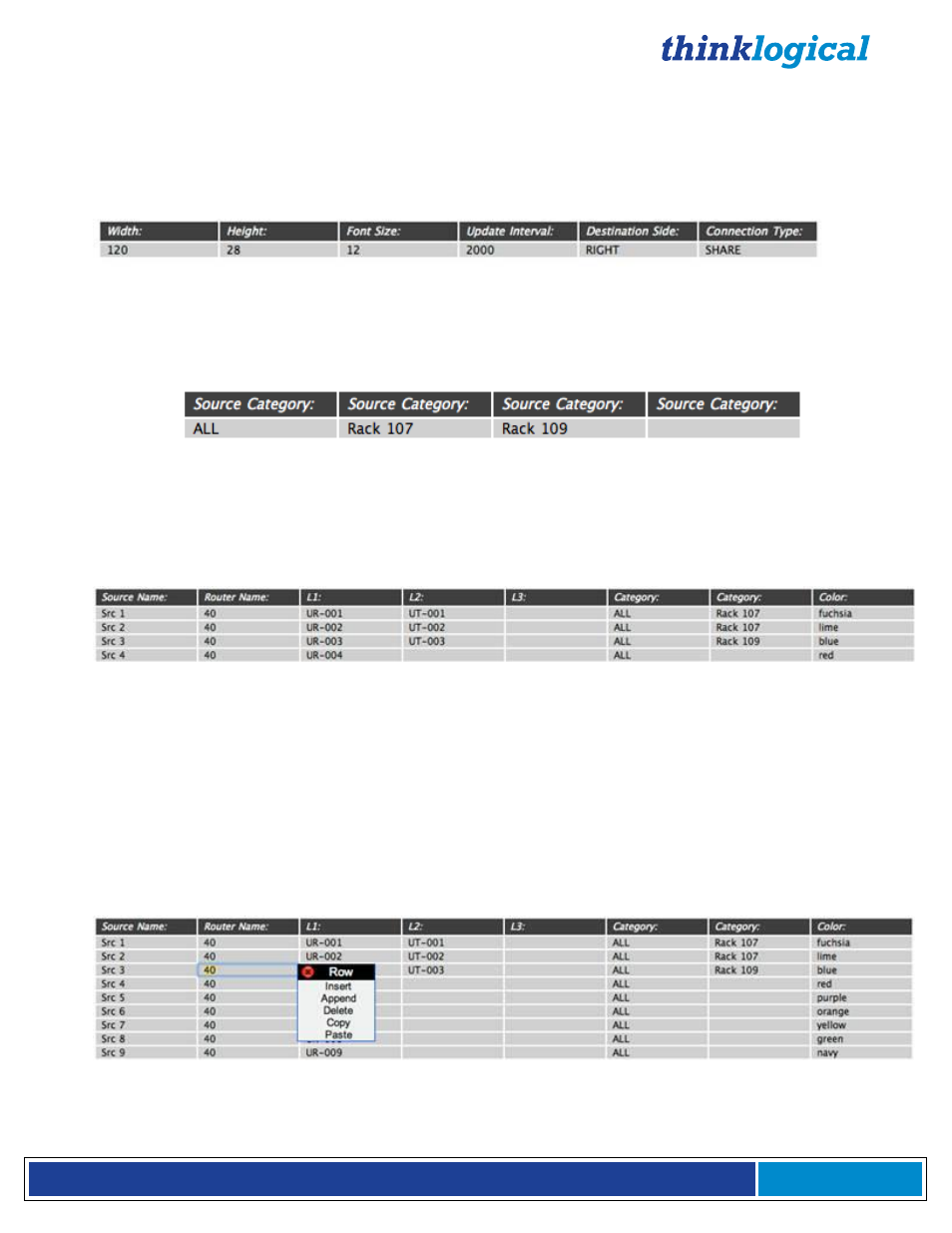Thinklogical MX48 Router Manual User Manual
Page 44

®
M X 4 8 R o u t e r P r o d u c t M a n u a l , R e v . F , D e c . 2 0 1 4
Page 40
There are three ways of interpreting the values found in the fields below a header:
The first is “global”. This value is assigned to the name defined in the header above it and it will apply
throughout the application. Examples of a global value would be: “Font Size”, “Connection Type”, and
“Update Interval”.
Figure D14: Global Values
The second type of value is part of a list. If there are multiple headers with the same name, then the
values found below those headers will be added to a list with that name. Examples of lists include
“Source Category”, “Destination Category”, and “Viewable”.
Figure D15: List Values
The final type of value is defined when the entire row is meant to be thought of as an “object”. A good
example of an object would b
e a “station” which has its own name, some number of input and/or output
ports that should all be switched at the same time, and additional other fields.
Figure D16: Object Values
In the example above, the station with the source name “Src 1” has fields for the router name “40”, the
ports used in that router (“UR-001” and “UT-001”), the categories that will show it (“ALL” and “Rack
107”), and the color that this source and the destinations will display when they are connected
(“fuchsia”).
X4 Configurator imitates a simplified model of a spreadsheet within the user’s browser. Rows can be
added or removed by left-
clicking on any of the light gray “value” rows and choosing the proper choice
from the drop down menu. New columns can be added by right-
clicking on any of the dark “header”
fields and selecting “Append” or “Delete” from the drop down menu.
Figure D17: Right clicking a row
